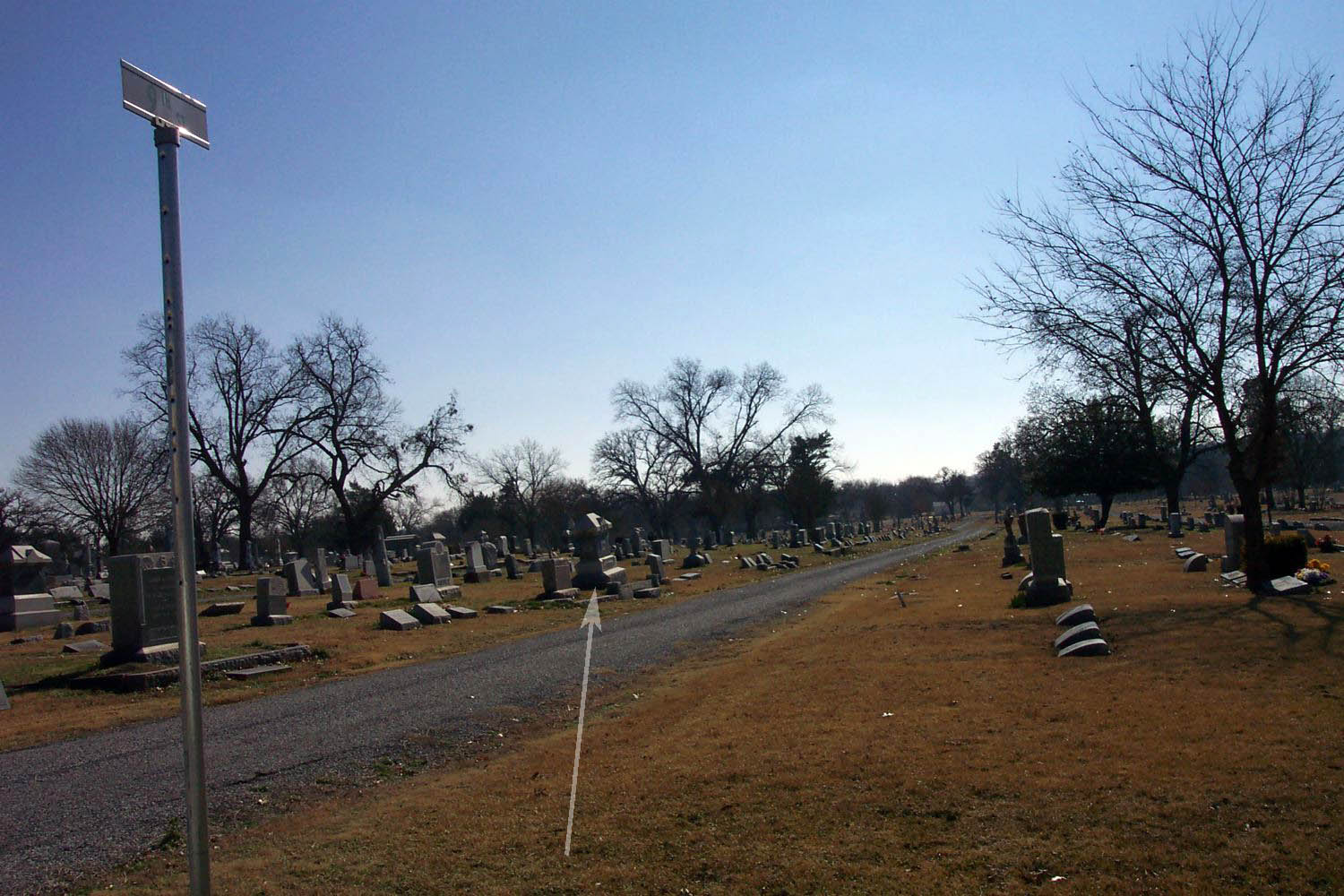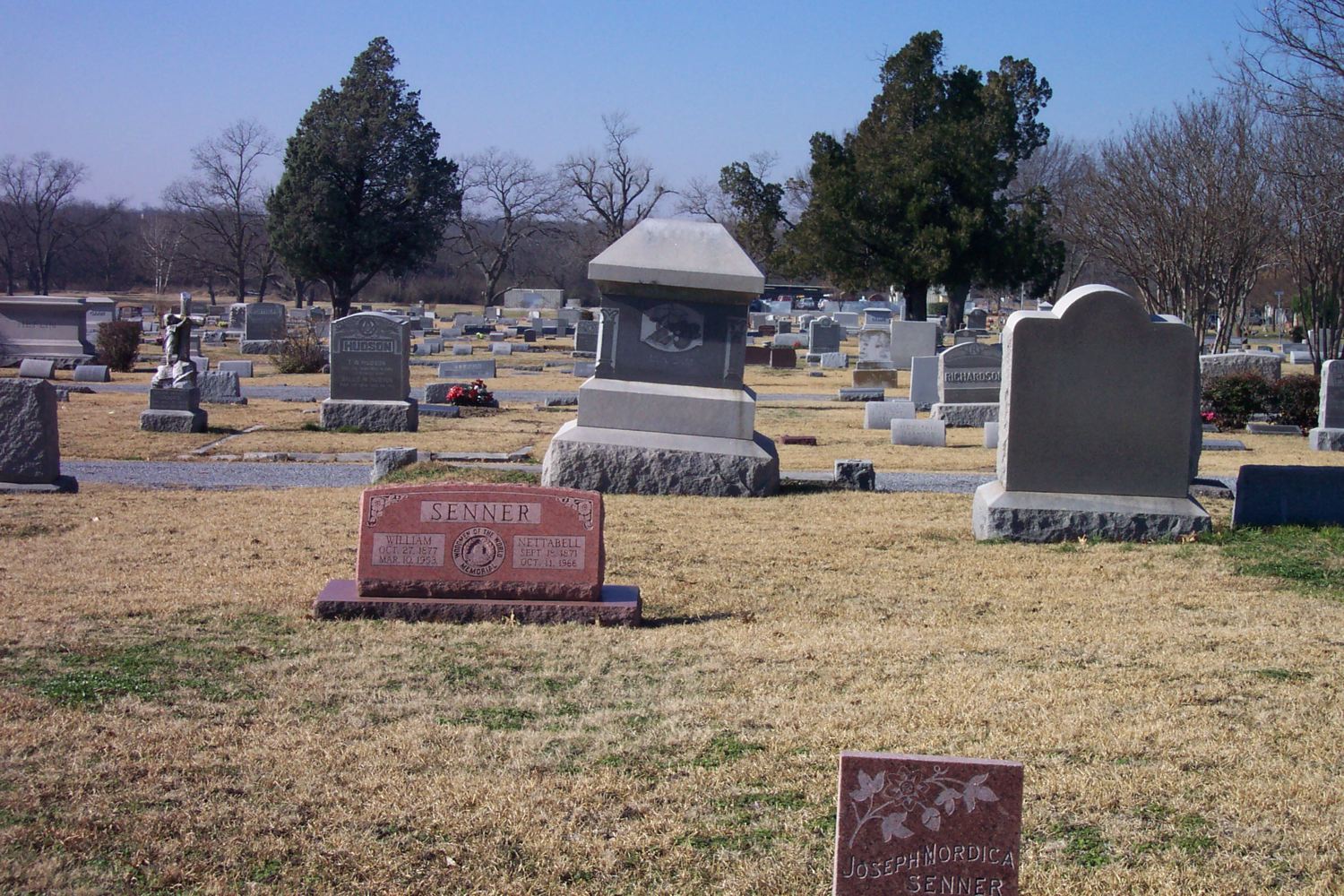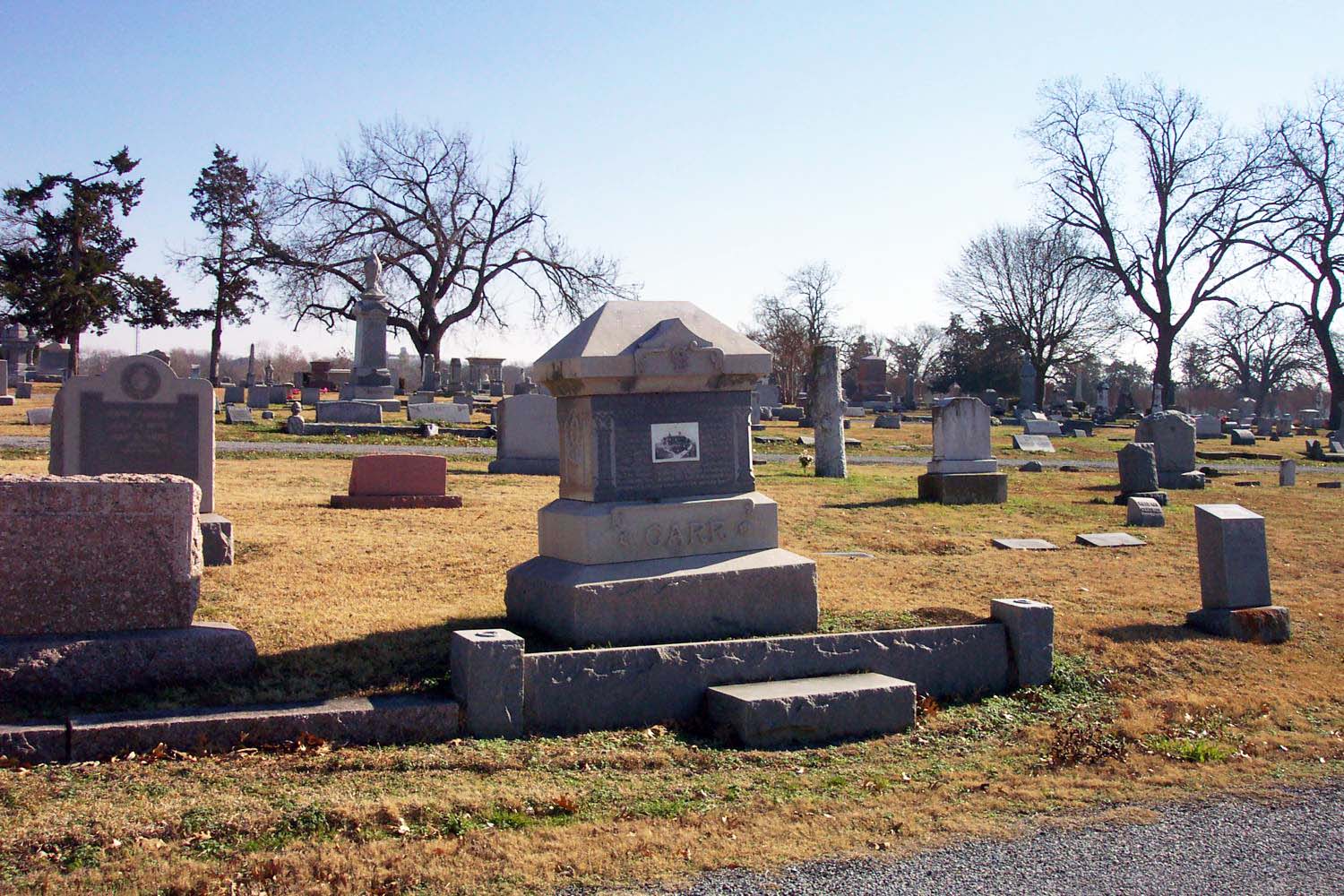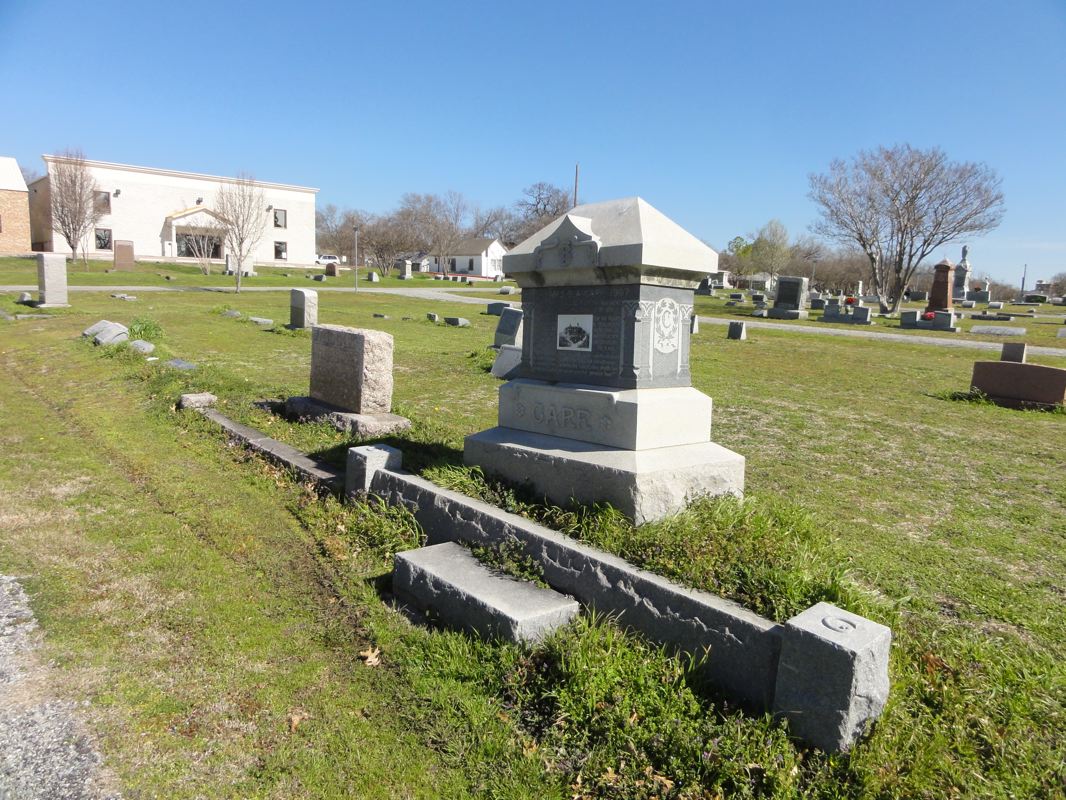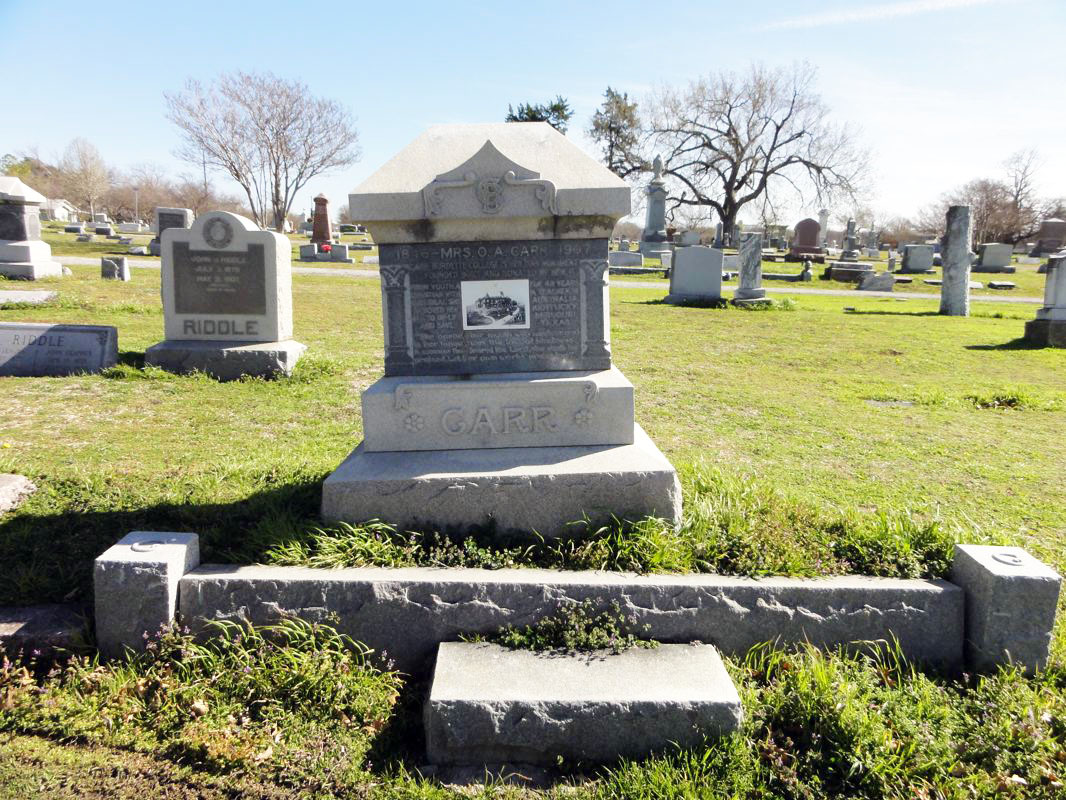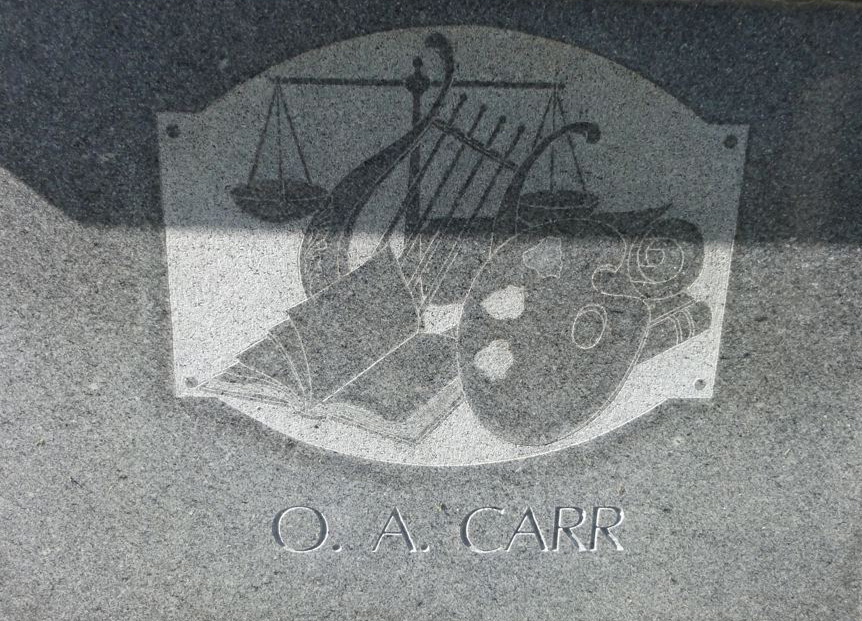Oliver Anderson Carr
1845-1912
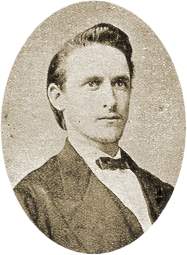
Young Preacher
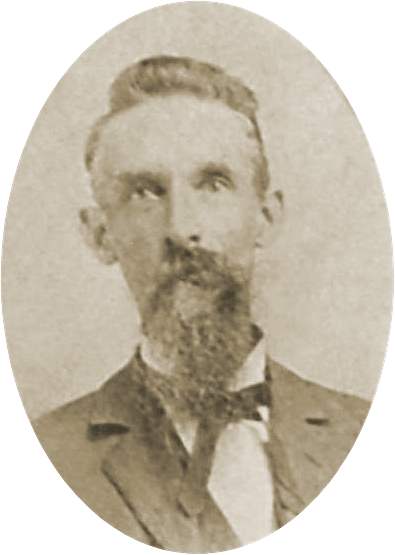
Ligon Portraiture Picture, 1899
![]()
Biographical Sketch On The Life Of O.A. Carr
We met in Pittsburgh, Pennsylvania, in October, 1909. One night during the great convention that was being held in that city an Australian banquet was held at Squirrel Hill, where Lawson Campbell, formerly of South Australia, was the preacher. Some of us had to wait a long time to get a tram to take us back to the city, it being very late.
During that wait it was a privilege to spend the time in conversation with O. A. Carr about the cause in Australia, and many of the Lord's people in that land. Often I had heard older brethren speak of him, and the great work he did at Collingwood, Hobart, and other places, and now there was the joy of talking with him face to face.
Boyhood
Oliver A. Carr was born in Kentucky in 1845, his father, at the time of his birth, being a farmer. Later on the father sold the farm and moved into Mayslick in order to give his children a better chance for an education. While attending school there Carr came into contact with Walter Scott, one of the great early preachers in connection with the Restoration Movement. After a strenuous life Scott had gone to Mayslick to spend his remaining days. He was then a venerable looking man, with a stately bearing. Some days he would go to the school and address the scholars, and so Carr came into close touch with him.
The son of his teacher induced Oliver to go to the Sunday school at the Church of Christ. After one or two attendances he thought he would try the Baptist school, but the teacher there spent the time in trying to explain something about the Holy Spirit that completely puzzled the boy, and so he decided to go nowhere. This determination he adhered to for some little time.
However there was a blacksmith living in the village named Eneas Myall who was a Christian. This man had heard a preacher named Ricketts preach the old Jerusalem gospel, and when that man called upon his hearers, like Peter did at Pentecost, to "repent and be baptised in the name of Jesus Christ," it seemed to him like a voice from the past. He promptly obeyed, and became very enthusiastic about the cause. He was always trying to influence others towards the truth. This man took a great interest in Oliver Carr, and so one day, when W. T. Moore was holding a mission with the church in that village, he said to the boy, "Ollie, isn't it about time you became a Christian?" Oliver was then 15 years of age. He was present at the service the next Lord's day, and heard Moore preach on "What must I do to be saved?" During the week that followed he decided in his heart to accept Christ, and determined that on the next Lord's day he would make "the good confession." He approached his father on the matter, and he said, "If you know what you are doing, go ahead." His father at that time had not obeyed the gospel. At his baptism the only member of his family present was his sister. His mother made the remark at the time, "The Campbellites have got Ollie."
The Student
The blacksmith soon after approached Oliver and offered to finance him through Kentucky University. The offer was accepted, and at 16 years of age he became a student in that institution.
At the end of the year, however, he went back home because of bad health. But refusing to be daunted by this, he returned to the University, and continued his studies. But all his life O. A. Carr had poor health.
While a student he started preaching, buying a horse on which to ride out to his appointments. On one occasion an appointment was made to preach in the mountains, and Oliver was accompanied by another student. On the way out they passed a beautiful pool of water, and the youthful preachers said, "This is where we will baptise," and they did, some eight souls submitting thus to the Messiah there at that time.
Carr was filled with zeal for the preaching of the gospel, and for the plea for the wearing only of divine names by the people of God, and the unity of all who follow Christ, and wanted everybody to hear it.
At last he determined to go to his boyhood home to preach. He started on a Thursday night, and on Saturday baptised fourteen people. The singing was led by a young woman named Mattie Myers. These two met, a correspondence followed, and ultimately she became Mrs. O. A. Carr.
Off to Australia
At a State meeting in Lexington, J. W. McGarvey read a letter to Carr from G. L. Surber in Australia, who wrote of the great need for preachers in that land. McGarvey urged O. A. Carr to go, saying, "Come, Ollie; it is just as near heaven from that country as from Kentucky." He wrote to Mattie Myers about it, and asked, "Would you go with me?" In the end she agreed to go, and had to give up her college with about 100 girls in it, to do so. They were married on March 26, 1868.
Before leaving Mr. Carr had the joy of seeing his own father and mother yield to Christ.
Beneath the Southern Cross
Mr. and Mrs. O. A. Carr reached Melbourne in September, 1868. While he preached successfully at Collingwood she, among other things, conducted a school for young ladies. While at Collingwood the matter of the erection of a chapel was under consideration, and there was some difference of opinion among the brethren over it, some wanting a wooden building, and some a brick. He hoped that it would be constructed of brick, but he said, "Let the majority decide. If the majority say a wooden chapel, a wooden one it will be." How sensible! Many a church wreck would be averted, and many a preacher saved sorrow, if such a conciliatory attitude were always taken.
In October, 1871, a young man named George Smith, who was a Melbourne disciple, removed to Hobart, Tasmania, and as there was no church known as a church of Christ in that place he wrote Carr, urging him to go there to establish one. Early in 1872 he went, and in one year he gathered together a church of 108 members. During the whole of the time he was there he was hospitably entertained in the home of Mr. and Mrs. George Smith.
At the end of the year through ill-health he relinquished the work in Hobart, G. B. Moysey succeeding him. He determined to return to America to recruit his health, and to see his people, intending to come back to Australia. However, after a time in the States, he felt that there was a need for him there, and so he sent for his books and other things he had left behind. But his heart was still out here, so much so that he collected a sum of money to help secure the chapel in Hobart, and he sent it out by the hand of J. J. Haley when he came to take up the work in these fair south lands.
Back Home
His wife devoted herself to educational work, while he continued preaching after their return home. Mrs. Carr founded Carr-Burdette College, and spent her final days in work she so much loved. Mr. Carr became State evangelist in Missouri in 1884, and in that capacity did a good work. After a time he became weary of the continual traveling and settled down, but still preached.
Mrs. Carr passed away in 1907, and he tarried a few years longer. Both lives were well lived, and both left behind memories that will long be cherished.
Only four years in Australia, and yet what an impact they must have brought to bear upon the work out here, and how much they accomplished in firmly establishing the cause in this land! Surely such lives, and such devotion to the plea, will help us, who today are carrying on the work, to be true, and to be consecrated to the task that has been given to us.
-From Heralds Of Christian Unity, By Thomas Hagger, Melbourne, Victoria, Australia, c.1938 pages 74-78
![]()
Dallas News Obituary
Sherman, Tex., Nov. 13. - Dr. O. A. Carr, president of Carr-Brunette College of Sherman, died in this city this afternoon at 1:30 o'clock after a long illness. Dr. Carr was perhaps one of the best known educators in the South. He was born at Mays Lick, Ky., Feb, 1845, securing the rudiments of an education in his native town. Later he entered the University of Kentucky at Lexington, KY., where he finished with high honors. On March 26, 1868, he was united in marriage to Miss Mattie Myers of Mays Lick, also a graduate of the University Kentucky and immediately after the marriage Dr. and Mrs. Carr left for Australia, as missionaries of the Christian Church. They stayed in that country until 1873, Dr. Carr carrying on evangelical work for the church and Mrs. Carr establishing a school for young ladies at Melbourne. In 1873 they made a tour of the Orient and retuned to American. In 1894 Dr. and Mrs. Carr came to Sherman and established Carr-Burette College, a school for young ladies. Mrs. Carr died five years ago, and was buried in West Hill Cemetery in this city. Dr. Carr has carried on the work at the college since her death until the end of the last term, when he announced that Dr. J.L. Anderson, formerly of the Texas Christian University, would henceforth be in active charge. Dr. Carr's health began to decline shortly aft the close of the school last year, and notwithstanding the fact that he has had attention of the best physicians and nurses, he did not improve. Recently he went to Sulphur, Ok. to try the water there, when he returned ohm only a few days ago he told some of his friends that he felt much better than he had for some time, and the announcement of his death this afternoon proved a shock to citizenship of Sherman, and to many of his nearest friends.
Funeral services will be held at the Houston Street Christian Church Thursday afternoon at 2:30 o'clock, conducted by Elder R.D. Smith, the pastor, and burial will be beside his wife in West Hill Cemetery. Dr. Carr is survived by a brother, R.A. Carr of Mayfield, Ky., and two sisters, Mrs. Mary Goodard of Mount Carmel, Ky., and Mrs. Minnie R. Fox of Stonegap, Va. The latter is the mother of John Fox Jr., the author. He was very successful in his financial investments and leaves large property interest in Wichita, Topeka, Kan., and Kansas City and Springfield, Mo. He is also a large land owner in Grayson County. While it does not come from an authoritative source, it is stated here today that he leaves Carr-Burdett College a handsome endowment by his will. --Dallas News, Nov. 14, 1912.
-Special thanks to Tom L. Childers at Find-A-Grave for providing this obituary. See a scan here.
![]()
>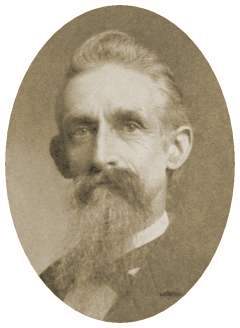
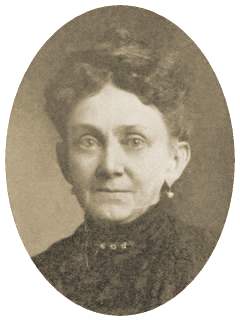
O.A. & Mattie F. (Myers) Carr
Mrs. O.A. Carr - Founder & First President Of Carr-Burdette College
Pictures From Churches Of Christ, By John T. Brown, c.1904
![]()
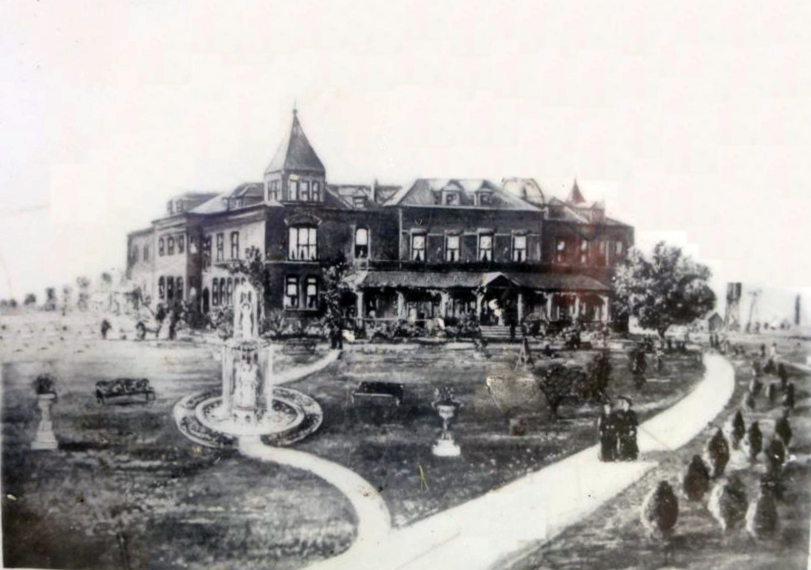
Carr-Burdette College
In the early 1890's after O. A. and Mattie returned to the U.S.A. from Australia, it was their desire to begin a school for girls in Northeast Texas area. Mrs. Carr was quite the entrepreneur, as she utilized her business skills to build the college building. She sold about 250 land lots in the Sherman area for about $200.00 per lot. With the proceeds she built a building on the eight-acre plot that both housed and schooled the young girls. She called it the "Girls' Home."
Her education was that of the typical "female seminary" of that day with its emphasis English Literature, French Conversation, the "accomplishments," music and art, lady-like conduct, and the social graces, with a sort of subdued recognition of the expectation that the young lady would someday be the mother of a household. She has a consuming passion to establish and head a college for young women that would carry on this cultural tradition. She also had the energy to work, and a will to bend things her way.
With the background of the "Blue Grass Region" of Kentucky and a wealthy home, she was somewhat of an aristocrat in bearing, ornate in dress, with an air of dignity. She was too serious and in dead earnest to be impressive socially. She was a good persuader. She persuaded the merchants of St. Louis and other cities to donate furniture for the school, and the people to buy lots in Sherman to aid in erecting the building.
O.A. Carr, her husband, was a Christian minister, serious, self-effacing, awkward socially, and rather heavy as a speaker, and a genuinely sincere, noble, Christian gentleman. He was valuable in the school because he was such a versatile scholar, able in teaching philosophy, religion, history, and the languages.
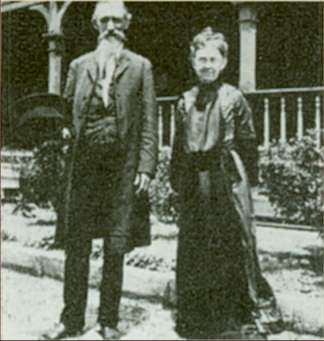
Carr-Burdette College opened September, 1894, in Sherman, "the Athens of Texas," in the one beautiful building that housed the girls, the faculty and all the classrooms. Art was taught by Mrs. Carr herself. The parlor was arranged very attractively with displays of paintings and statuary. She wanted a small select school for girls, and she got it. The girls expected the Head Woman to be a little bit odd, and they got what they expected. She was different.
For fourteen years Mrs. Carr reigned happily. On her death in October, 1908, Mr. Carr carried on as president until his death in 1912.
The school had been generally advertised as the property of "the Christian Church of Texas." During the lifetime of the Carrs it was well understood that the management was in their hands and that the Board of Directors was more or less nominal. But on the death of Mrs. Carr and then Mr. Carr, the question arose in the minds of the people, which "Christian Church?" For, a division had occurred which was especially prominent in Sherman.
Upon consulting the deed, it was found that the property was deeded to, "O.A. Carr and M.F. Carr, as Trustees, for the Christian Church of Sherman, and to be held by the said Christian Churches (note the plural) for the Christian Churches of the state of Texas." Provision was made also that, "in case their should hereafter be more than one Christian Church in the City of Sherman, then the trust herein shall en(s)ure to all of said churches, equally, the powers herein conferred upon the officers of the said Christian Church, shall be exercised by the officers of all such churches assembled as one body.
It was further provided on the death of Mr. and Mrs. Carr the directors should continue, and should fill vacancies, and if the directors should be reduced by death or resignation to five, "then the elders and the deacons of the Christian Churches, at Sherman, Texas, shall appoint a sufficient number to make the full number of nine thereof, which Board thus created shall have all the powers therein prescribed.
It came to pass that the majority of the Board was of the First Christian Church of Sherman, and they took control at the death of Mr. Carr. It had been generally patronized by this group rather than the, "Church of Christ."
The Board consisted of Judge Jesse F. Holt, W.L. Hay, Will H. Evans, W.H. Lucas. All of these were members of the First Christian Church of Sherman. There may have been other members of the Board.
When Mr. Carr died, he had associated with him Professor J.F. Anderson, formerly business manager of T.C.U., who continued as President, but, unfortunately, only for a year. For he was killed accidentally by a fall down the elevator shaft in 1914. His son, Grantland Anderson, completed the school year. For three years, 1913-1916, the school was operated as Carr-Carlton, the faculty of Carlton College having joined it.
>After a steady decline of funding and students, the school closed its door in 1929. Ten years later the property was sold.
-Notes From History of Texas Christian University
![]()
Directions To The Grave of O.A. & Mattie F. Carr
O.A. and Mattie F. Carr are buried in the West Hill Cemetery in Sherman, Texas. Off Hwy. 75 in Sherman, take Exit 58, the Downtown Exit. Travel through the first light (W. Lamar St.{one-way east}) and go to next road, (W. Houston {one-way west}) and turn left. Go under the bridge, and as you do, look off to the left and you will see the cemetery in the distance on W. Lamar St. You will need to go four or five blocks and then turn left. You should see the cemetery straight ahead. It is on W. Lamar St. Go into the cemetery at the main entrance and turn to your immediate left. Go to the 5th little road to the right, called 9th St., and turn right. Begin looking to the left. The Carr monument will be about the sixth section ahead on the left. When Mrs. Carr died in 1907 the stone that was purchased and placed there was a wonderful tribute to the woman who built Carr-Burdette College. When O.A. Carr died, not much was added. On the back side of the stone is the simple inscription, O.A. Carr. It has no birth or death dates, perhaps a visual symbol of the disposition of this man of God.
GPS Coordinates
33.632742,-96.620767
Stone On Edge of Plot Closest To Street
With Bodies Laid Behind
View Larger Map
![]()


Inscription:
1846 - Mrs. O.A. Carr - 1907
Carr-Burdette College Is Her Own Monument
Founder, Built And Donated By Her.
From Youth A Christian With High Ideal.
She Devoted All To Uplift And Save.
For 42 Years A Teacher In Australia,
Kentucky, Missouri, Texas
"She Opened Her Mouth With Wisdom And
In Her Tongue Was The Law Of Kindness.
A Womans That Feared The Lord, She Shall Be
Praised. Let Her Own Works Praise Her."
CARR
Photos Taken February 23, 2012
Courtesy of Scott Harp
www.TheRestorationMovement.com
Web editor note: In February, 2012, it was my privilege to visit the graves of O.A. & Mattie Carr. I visited the graves while making my way to participate in the annual Affirming The Faith Lectureship in Oklahoma City, Oklahoma, I got into the area early, affording me the opportunity to put about 2000 miles on a rental car in order to locate graves of gospel preachers and church leaders of yesteryear in a wide area. My fourth day I was able to visit the grave of O.A. Carr. I had visited the grave a few years ago, but it was good to see it again. Also buried in this cemetery is two more preachers, Willis Kreager and Ephraim H. Rogers. Perhaps there are others.
![]()
